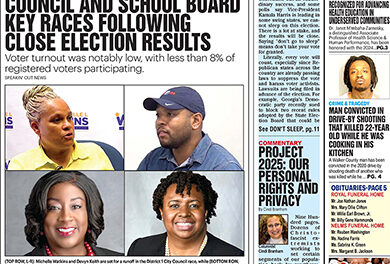LaToya Melton, Assistant Professor of Field Education in Social Work Department at UAB. (PROVIDED)
” data-medium-file=”https://www.birminghamtimes.com/wp-content/uploads/2023/11/LaToya-Melton-300×194.jpg” data-large-file=”https://www.birminghamtimes.com/wp-content/uploads/2023/11/LaToya-Melton-1024×663.jpg” />
By Keisa Sharpe-Jefferson
The Birmingham Times
Ask about homelessness in Birmingham, LaToya Melton, Assistant Professor of Field Education in Social Work Department at UAB, is straightforward: “More can be done,” she said.
In fact, she calls it a “pressing issue” for the Magic City. As part of her field of study, Melton has worked specifically with the homeless population for the last 10 years.
Melton, 44, graduated from the University of Alabama in 2005 with a master’s degree in social work and is currently in their Doctor of Social Work program.
And while COVID has proven to be a devastating public health crisis since 2020, it also magnified other issues that affect the city’s most vulnerable population, including homelessness, she said.
“(Homeless) people were in trouble before COVID,” said the professor. “So when you have agencies and employers that shut down (as a result of the pandemic) and no longer offer services to these groups, it magnifies the problem.”
On a given night in Birmingham, 847 are homeless and 465 are sheltered, according to oneroofonline.org. Those numbers include 100 homeless veterans consisting of 32 who are not in shelters; and 35 homeless families consisting of 99 individuals.
One of Melton’s passions is working to remove the stigma associated with homelessness. But said all the factors that contribute to and/or perpetuate what she calls a “societal problem” should be understood.
“I think the first thing is education,” she said. “If people can become more aware of homelessness and what causes it, through that understanding, maybe there can be more programming to support homelessness and find affordable housing solutions.”
Sheltered Limitations
The professor has studied homelessness from a number of perspectives and said many believe a quick fix to the issue is emergency shelters. And while it’s a start, she shares a concern about a lack of these facilities for those of the same household.
“Let’s say you have a mother who has a son older than 10, there’s no shelter for her and her son (to stay together) … especially if it’s a women and children’s shelter. She wouldn’t have anywhere to go unless she decided to send her son somewhere else. And who’s sending their son to a men’s shelter alone?” she asked.
Melton pointed out that men’s shelters accommodate all men, while women’s shelter accommodate women and children, but not if that woman has a son that’s over the age of 10.
“And even if you have a husband and wife that have children, that still separates the husband and the wife and that still separates the children because that mom will have to stay with her daughter(s) and the husband will have to go with the son(s) so that still breaks the family up,” she said.
Because of that, Melton said many families sleep in their cars or other places that are not meant to be used by families for shelter (like parks, storage units, or abandoned buildings or houses) because of fear, shame or lack of accommodations for all of their loved ones.
Lack of Affordable Housing
A lack of affordable housing also contributes to the problem, she said.
“So outside of teaching, I’m a social worker by profession. I have worked 18 years with social work and specifically with homeless individuals and it is always a challenge in trying to find housing that accommodated families. So that’s another item that plays into finding solutions for unsheltered homeless.”
Melton said “sheltered” homeless are distinguished as those who can go to a shelter or be in transitional housing, while “unsheltered” homeless are those living in their cars or other places that are not meant for human habitation.
More time should be spent on the core of the problem.
Homelessness is more than people experiencing mental challenges or addiction, she said.
There’s a cycle that can begin with a lack of resources (for counseling or other needed support), a lack of adequate shelters and a lack of long-term affordable housing which can cause a downward spiral that contributes to mental health challenges, she said and some people simply “check out.”
“If people can become more aware of homelessness and what causes it, through that understanding, maybe there can be more programming to support homelessness and find affordable housing solutions,” she said.
The Great Divide
But Melton said it takes help from family, community and lawmakers for the epidemic to be addressed.
“Even when we think about our state not expanding Medicaid, when we think about these different policies, (we should ask) are they really helping or are they causing more barriers for people to be self-sufficient?”
“And thinking about mental health, if you need a mental health provider, how do you get that if you don’t have the insurance to cover it? Those are factors that can contribute to homelessness because it’s hard for you to get into treatment because there is a lack of resources.”
And as Melton looks to the future, she said she often wonders how and when change will come. “I sit back sometimes and I have to ask, will we ever come out of this or will things get better?”
Help For Those Helping Others
Melton, a psychiatric social worker with the emergency department at the University of Alabama at Birmingham Psychiatric Medicine/Psych Emergency Services, said people overwhelmingly, and sometimes erroneously turn to hospitals for help.
“You see a number of people coming in who are repeat visitors to the try to address mental health and homeless needs through the emergency department,” said Melton. “It shows just how bad people are struggling just to have reliable health care and housing. You have doctors and social workers and staff strapped, in a sense, for resources to try to connect people.”
And Melton adds, in a sense, everyone is strapped for resources and left looking for answers.
For health care professionals, she encourages self-care in dealing with the massive needs in the community – housing, mental health and otherwise.
“There is a wear and tear on you when you see these issues, so I’m always encouraging my students to take care of themselves because life doesn’t stop because you’re in a helping profession, and so we have to make sure we’re taking care of ourselves just to be able to do the work.”










